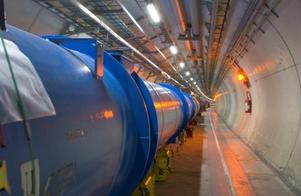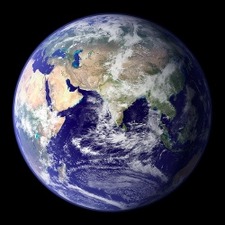Large Hadron Collider Makes History
Scientists of CERN, the European Organization for Nuclear Research, said that on Tuesday, March 30, 2010, their $10 billion research tool, the Large Hadron Collider, (LHC), a 17-mile tunnel on the border of Switzerland and France, near Geneva, Switzerland, crashed two proton beams into each other at high energy, at three times more force than ever before. Why is this important? Because scientists are telling us that this is a breakthrough, marking a "new territory" in physics, " and "experiments at the LHC may help answer fundamental questions such as why Albert Einstein's theory of relativity -- which describes the world on a large scale -- doesn't jibe with quantum mechanics, which deals with matter far too small to see.The collider may help scientists discover new properties of nature. The as-yet theoretical Higgs boson, also called "the God particle" .

